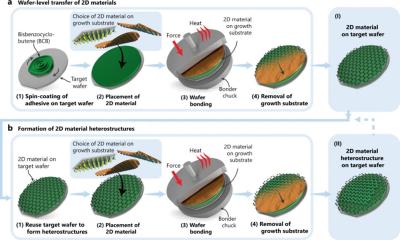Researchers examine 'Kagome' graphene and report promising results
Researchers from the Department of Physics and the Swiss Nanoscience Institute at the University of Basel, working in collaboration with the University of Bern, have recently produced and studied a compound referred to as "kagome graphene", that consists of a regular pattern of hexagons and equilateral triangles that surround one another. The name kagome comes from the old Japanese art of kagome weaving, in which baskets are woven in the same pattern.
 Kagome graphene is characterized by a regular lattice of hexagons and triangles. Credit: R. Pawlak, Department of Physics, University of Basel
Kagome graphene is characterized by a regular lattice of hexagons and triangles. Credit: R. Pawlak, Department of Physics, University of Basel
The team's measurements have reportedly delivered promising results that point to unusual electrical or magnetic properties of the material.






